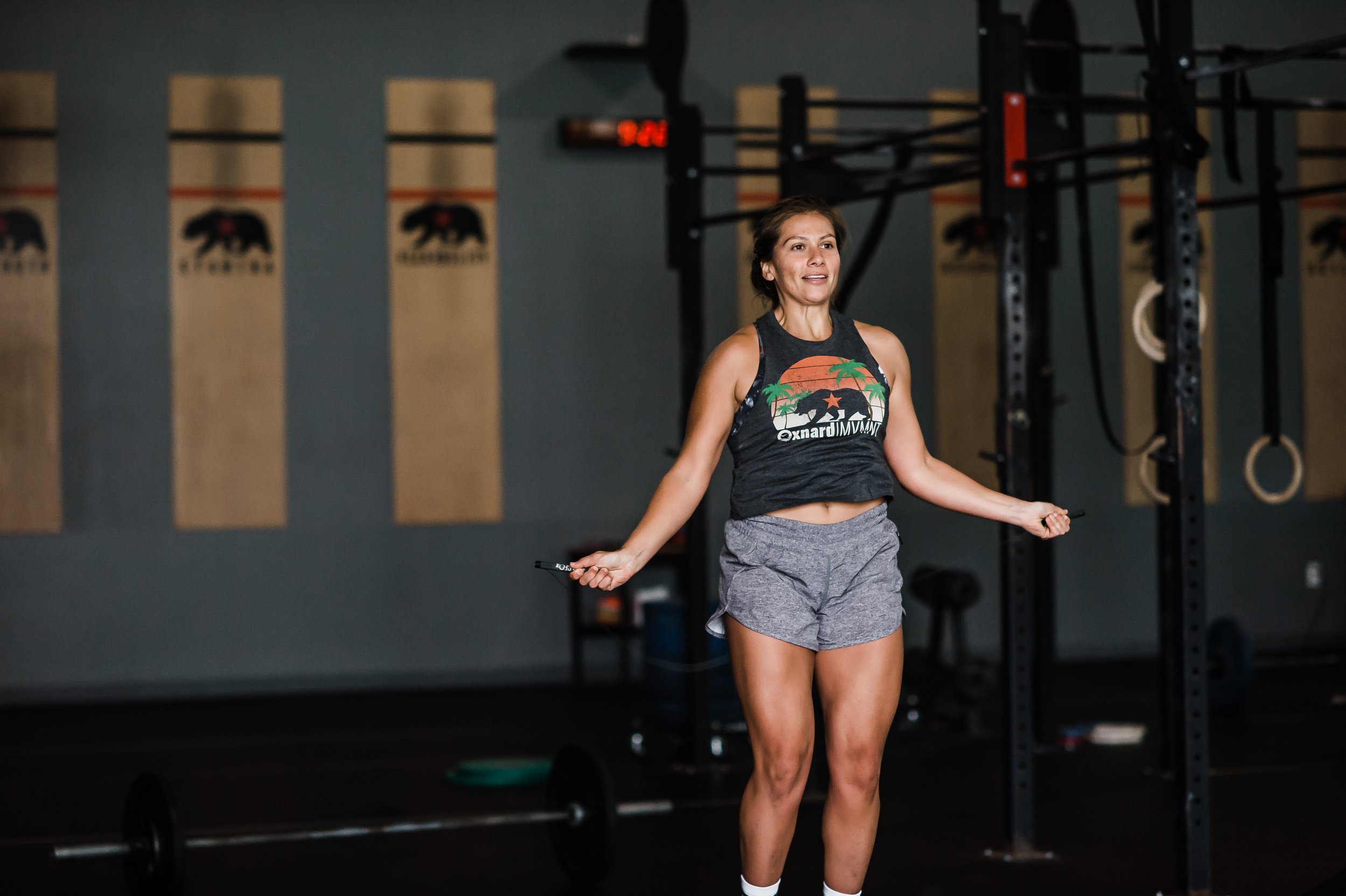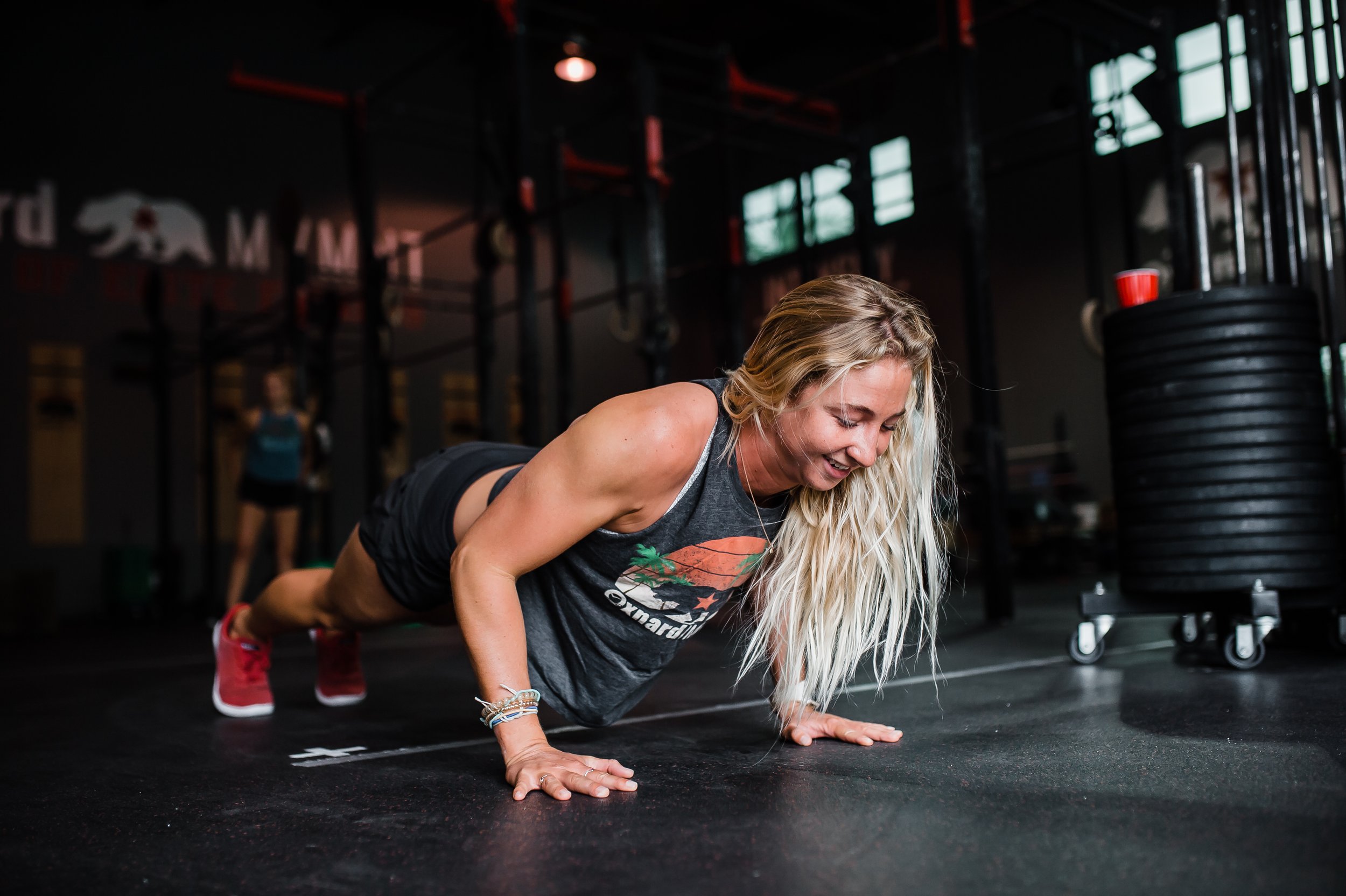
GROUP CROSSFIT CLASSES AT TWO LOCATIONS IN OXNARD AND VENTURA
One membership, two locations. Same life-changing CrossFit methodology.
We would love to share with you some of our reasons why we believe CrossFit is one of the best decisions that you can make in your life.
We partner with Rich Froning of Mayhem Athletics for our program design. We believe in training hard and fast AND we also believe in sustainability—training for long term. We’re interested in building and sustaining fitness over decades, not just months.
WHAT IS CROSSFIT?
IN SIX WORDS,
CROSSFIT IS CONSTANTLY VARIED FUNCTIONAL MOVEMENTS PERFORMED AT HIGH INTENSITY.
WE BELIEVE
CROSSFIT IS FOR ANYONE.
-
CrossFit prides itself on the fact that its athletes train and prepare for the unexpected. And we believe a GPP program is the best way to do that. GPP is short for general physical preparedness, and it is used to improve your ability across all areas of fitness — speed, strength, endurance, flexibility, power, coordination, and so on. It is the opposite of SPP, or specific physical preparedness, which is used to increase your capacity in one area of fitness.
GPP is non-biased, meaning not biased toward one skill or area of fitness, such as strength or gymnastics. SPP is biased, with its programming predominantly built around one area. Programming that includes a strength piece before a metcon every day is biased toward strength. It is an SPP program.
The problem with SPP is that you end up “specializing” in whatever you decide to train. And when you specialize in one area, you lose capacity in others. For instance, if you are too good at strength, you will probably have limited cardio ability (and vice versa). That’s the problem with a strength-biased program. You can get strong, but your focus on strength sacrifices other skills, such as flexibility, speed, or endurance.
This is why many professional athletes’ training consists of both SPP and GPP — they are trying to round out their physicality, but need to be great at their one thing. They follow a varied program and then target their weaknesses with a biased program. You see this a lot with CrossFit competitors. The big strong folks hit the track, and runners try to make the barbell their new best friend.
-
For the general public, thats you and me, who is not competing in any sport, GPP is by far the best option because the goal is to be more fit for life, meaning the focus is on decades of fitness, not just this year or next year. Everyday people are not competitors. We are not willing to sacrifice our long-term health in order to “win” in the short-term.
We believe the aim of a good GPP program should be to get people fit without wearing down their bodies or over stressing any one area. And, of course, to physically prepare them for whatever the world throws their way.
-
From the beginning CrossFit was one WOD a day. Either a strength workout or a metcon, rarely both. That was it. No matter who you were, or how fit you were, that was the daily routine. Then CrossFit competitions came into existence, and even then it wasn’t until after the 2009 Games that people really started adding volume to handle the stressors of elite levels of competition. One thing to look at here is that volume was added in an effort to handle volume, not to strategically improve athletes faster.
The difference between everyday CrossFitters and Competitors is that one group knows the bargain they made for that extra volume, and the other group doesn’t. Competitors know that volume comes at a cost. They understand that working out twice a day is not as sustainable for decades. But they’re not concerned about the long game quite as much. They’re focused on what they have to do right now, today, to prepare for the 3-day storm that is the CrossFit Games or Regionals or whatever local comp. Their goals and their time frame for getting there are entirely different than the everyday person who wants to get fit, look better naked and be healthy well into their 90s. The art of being a competitor is to manage volume, injury and adaptation. This thin line is something that normal members should not be concerned with.
We also need to consider that Competitors generally have mastered the basics and are heavily monitored by coaches and specialists. They know exactly how many hours they will train each week and when they will recover. They put in extra time for pain management, mobility, nutrition, you name it. And they work with doctors, surgeons and specialists to help with the damage. Regular CrossFitters don’t have an entourage of experts. They are generally not as proficient with mechanics. They need more education. They need to learn about intensity (it could be argued a ton of wannabe competitors could use this education as well). They need help with finding better positions to potentiate the strength they already have, and that doesn’t require a daily strength piece.




